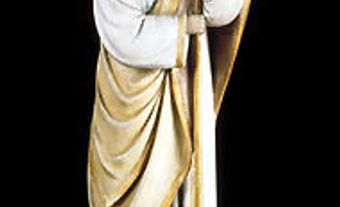Granche, Pierre
Pierre Granche, sculptor (b at Montréal 14 Mar 1948 - d there 30 Sep 1997). He was considered the main proponent of resurrecting concepts of public art in Québec. Following his studies at the École des beaux-arts de Montréal (1969), he received, a diplôme d'Études approfondies (DEA) in 1977, from the Université de Paris VIII (Vincennes). He initiated the Visual Arts Department at the Université de Montréal, and remained a professor there until his death, known as a master who maintained a constant link between his artistic practice and his teaching.
Since the mid seventies, his interest in giving a playful appearance to his geometric forms had already expressed itself. With his in-depth knowledge of architecture, topology and art history, he then undertook to maintain a constant connection between the objects that he gave concrete expression to and the spaces where they are placed. In this manner, he produced a series of installations in which the gallery or museum was an integral part of the exhibit: Musée d'art contemporain de Montréal (1985-86), Galerie Jolliet (1985), Galerie Christiane Chassay (1987), Musée du Québec (1992).
Since the beginning of his career, he was associated with public art within the framework of the Loi sur l'intégration des arts à l'architecture et à l'environnement (a Québec law integrating art and architecture with the environment). He produced several permanent sculptures, in particular at the Musée d'art contemporain de Montréal, the McCord Museum, l'Université Laval and London's Hyde Park. In the mid-eighties, he inserted a new figuration into his geometric structures made up of prototypes from Antiquity and hybrid forms, thus maintaining the anachronism of closeness between ancient and modern cultures: Thalès au pied de la spirale (1988), and la Colonne Boris (1995) show temporal sequences and rising movement where animal figures, cheerfully constrained in their habitat, form a kind of caricature of humanity with all its aspirations and contradictions.

 Share on Facebook
Share on Facebook Share on X
Share on X Share by Email
Share by Email Share on Google Classroom
Share on Google Classroom

